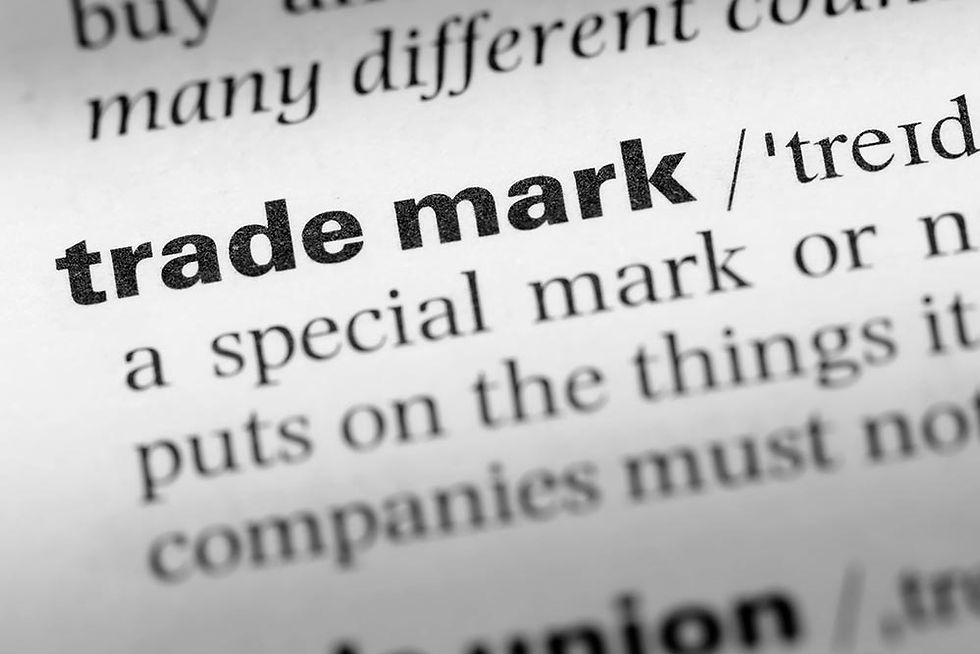How To Trademark Your Company Logo
- Lindsay Spiller

- Apr 29, 2023
- 4 min read
Updated: Aug 14, 2025

If you plan to use a logo to represent your business, you may want to consider trademarking it with the United States Patent and Trademark Office (USPTO). This will protect you legally against infringement and unauthorized use of your logo. Here are the steps you need to follow to trademark your logo with the USPTO:
Step 1: Conduct a Trademark Search for Your Logo
Before you begin trademarking your logo, you should conduct a trademark search to ensure that there are no other registered trademarks similar to yours. This will help you avoid infringing on someone else's trademark and potentially facing legal action.You can conduct a trademark search using the USPTO's online database, or you can hire a trademark lawyer to do it for you. A trademark lawyer can help you conduct a more thorough search and provide legal advice on the results.
Step 2: Choose a Trademark Attorney
While hiring a trademark attorney to file a trademark application is not required, it is highly recommended. A trademark attorney can help you navigate the trademark process and ensure that your application is filed correctly. When choosing a trademark attorney, you should look for someone with experience in trademark law and a good track record of success. You should also consider their fees and whether they offer a free consultation.
Step 3: File a Trademark Application
Once you have conducted a trademark search and chosen a trademark attorney, you can file a trademark application with the USPTO. The application can be filed online or by mail. The application will require you to provide information about your business, your logo, and the goods or services that your logo will represent. You will also need to pay a filing fee, which varies depending on the type of application you file.
Step 4: Wait for the Examination
After you file your trademark application, it will be assigned to an examining attorney to review it and determine whether your logo is eligible for trademark registration. If the examining attorney determines that your logo meets the requirements for registration, it will be published in the USPTO's Official Gazette for opposition. This allows other parties to oppose your trademark registration.
.
Step 5: Respond to Office Actions
If the examining attorney has concerns about your trademark application, they may issue an office action. An office action is a written communication that outlines the issues with your application and allows you to respond. You will have a certain amount of time to respond to the office action and address the issues raised by the examining attorney. Your trademark attorney can help you prepare a response that addresses the concerns raised.
Step 6: Registration
If your trademark application is approved, you will receive a registration certificate from the USPTO. This certificate provides legal protection for your logo and allows you to use the ® symbol to indicate that your logo is a registered trademark.
Trademark Fees
The fees for trademark registration vary depending on the type of application you file. As of 2021, the filing fees for a standard trademark application are $275 per class of goods or services. If you file your application online using the USPTO's Trademark Electronic Application System (TEAS), you may be eligible for a reduced fee of $225 per class. In addition to the filing fees, you may need to pay additional fees for services such as responding to office actions, filing a statement of use, or renewing your trademark registration.
How Long is the Trademark Process?
The trademark process can take anywhere from several months to several years, depending on various factors, such as the complexity of your application and whether there are any oppositions or office actions.
It is important to note that trademark registration is not automatic and requires active monitoring and enforcement to maintain your legal protection.
Conclusion
Trademarking your logo with the USPTO is essential in protecting your brand and ensuring that others do not use your logo without your permission. Following the steps outlined above, you can successfully navigate the trademark process and obtain legal protection for your logo.
Remember, conducting a trademark search is a crucial first step to ensure that no other similar trademarks could potentially cause issues with your registration. Hiring a trademark attorney can also help ensure your application is filed correctly and increase your chances of success.
While the trademark process can be lengthy and may require additional fees for certain services, the legal protection that trademark registration provides is well worth the investment in the long run. By obtaining a registered trademark, you can safeguard your brand and prevent others from using your logo without your permission.
In conclusion, if you plan to use a logo to represent your business, trademarking it with the USPTO is critical in protecting your brand. By conducting a trademark search, choosing a trademark attorney, filing a trademark application, and responding to office actions, you can successfully navigate the trademark process and obtain legal protection for your logo.
Spiller Law is an advisor to startup businesses, entertainment and media companies, and artists. Feel free to schedule a free consultation.
Spiller Law is a San Francisco business, entertainment, and estate planning law firm. We serve clients in the San Francisco Bay Area, Silicon Valley, Los Angeles, and California. Feel free to arrange a free consultation using the Schedule Appointment link on our website. For other questions, call our offices at 415-991-7298.
The information provided in this article is for general informational purposes only and should not be construed as legal advice or opinion. Readers are advised to consult with their legal counsel for specific advice.









Comments